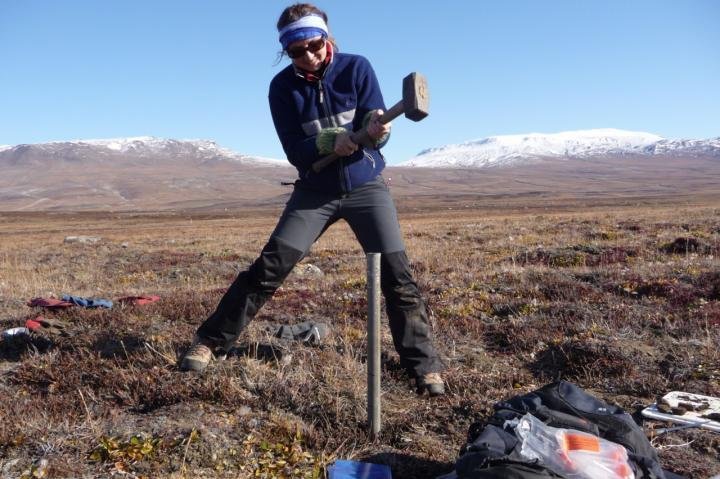Scientists studied the turnover of carbon and nitrogen by analyzing soil cores dug in Greenland. Photo by Andreas Richter
VIENNA, Dec. 1 (UPI) -- Three times the amount of carbon suspended in the atmosphere can be found sequestered underground -- the planet's soil stores approximately 9,170 gigatons of CO2. Until now, scientists didn't really understand why.
A new study, published in the journal Nature Communications, suggests lazy microbes are to thank.
Microbes in the soil break down organic matter into carbon dioxide and nitrogen, facilitating the transfer of carbon back into the above-ground cycle. So why don't they break down all of it? Why does some carbon and nitrogen get left behind?
Some scientists have suggested there is just too much organic debris making its way into the soil; microbes simply can't decompose all of it.
Researchers in Austria say that's not the case. While studying microbes, scientists found some work harder than others. Some microbes are moochers, relying on others to do the initial grunt work of breaking down organic matter into smaller bits that are more easily absorbed.
"It's a strategy we see all over nature," study co-author Ulf Dieckmann, an ecologist at the International Institute for Applied Systems Analysis, said in a press release. "Cheaters are everywhere -- across many contexts, it's an evolutionarily successful strategy to save resources and thus become more competitive."
Based on this new understanding, Dieckmann and his colleauges at IIASA designed computer models to simulate decomposition processes in the soil. The presence of moocher microbes slowed decomposition.
"This happens because the presence of microbial cheaters ultimately reduces the total amount of enzymes produced by the microbial community, while the total amount of microbial biomass stays about the same" explained lead study author Christina Kaiser, a University of Vienna ecologist.
Researchers say their new model offers a more holistic understanding of microbial communities in soil ecosystems. Simulations show cheaters aren't so much pariahs as they are partners in a balanced, dynamic system.
When temperatures warm and decomposition rates begin to increase, for example, the number of cheater microbes increases to slow things back down.
"Soil decomposition is a complex process that depends on many different factors," Dieckmann said. "It's not just the actions of the cheating microbes alone that lead to the self-regulation of decomposition we observed, but their interactions and feedbacks with microbial enzyme producers within a complex microbial system."















